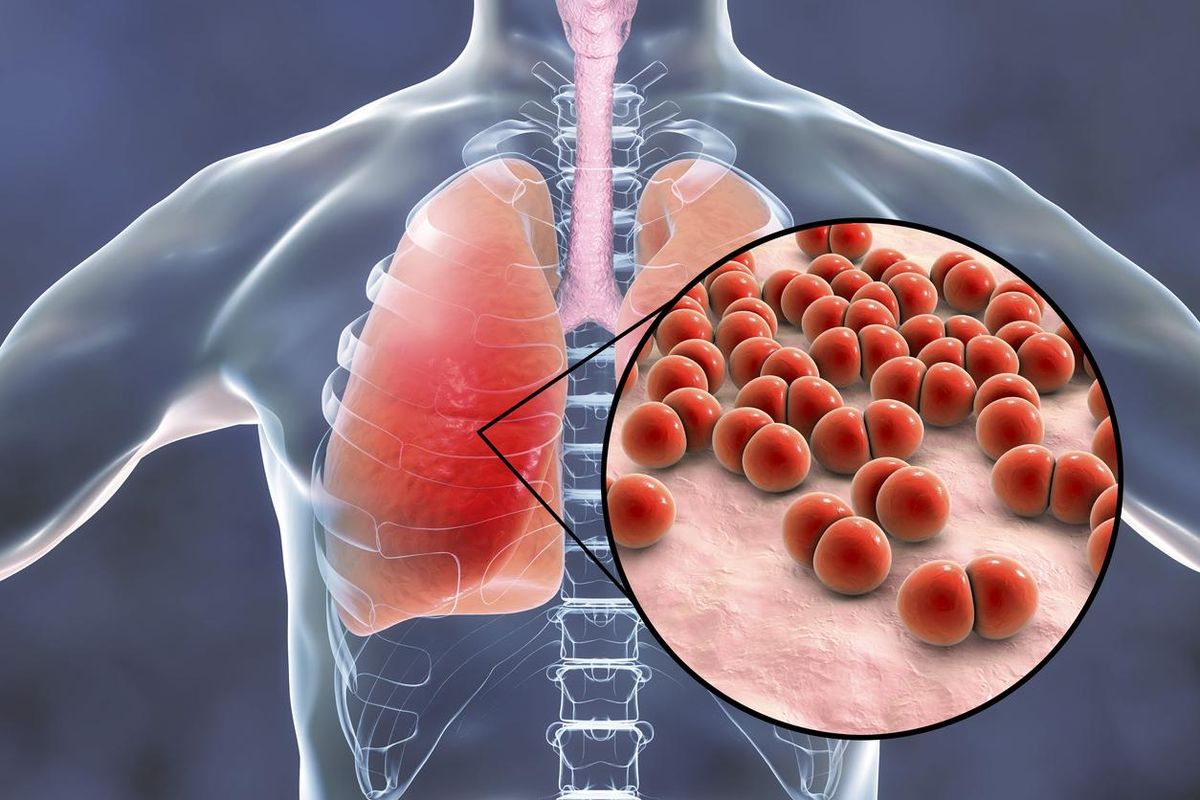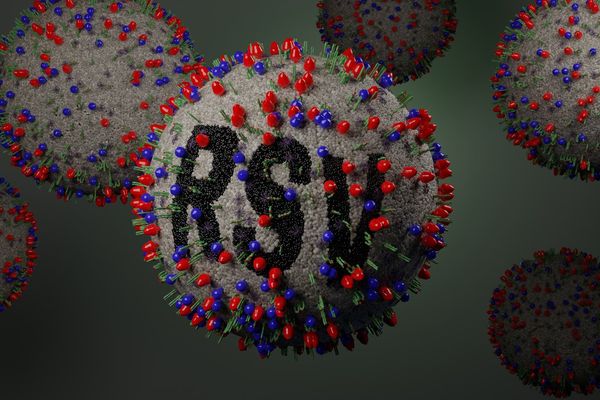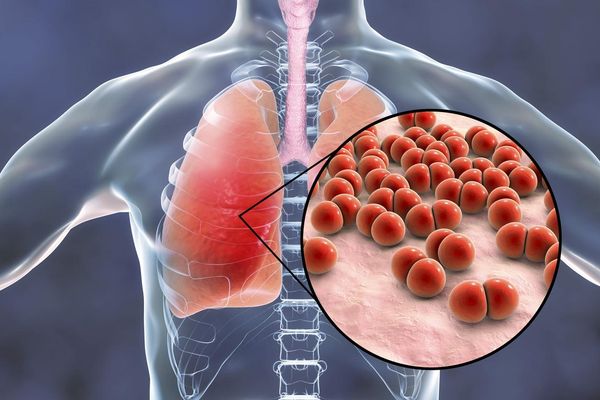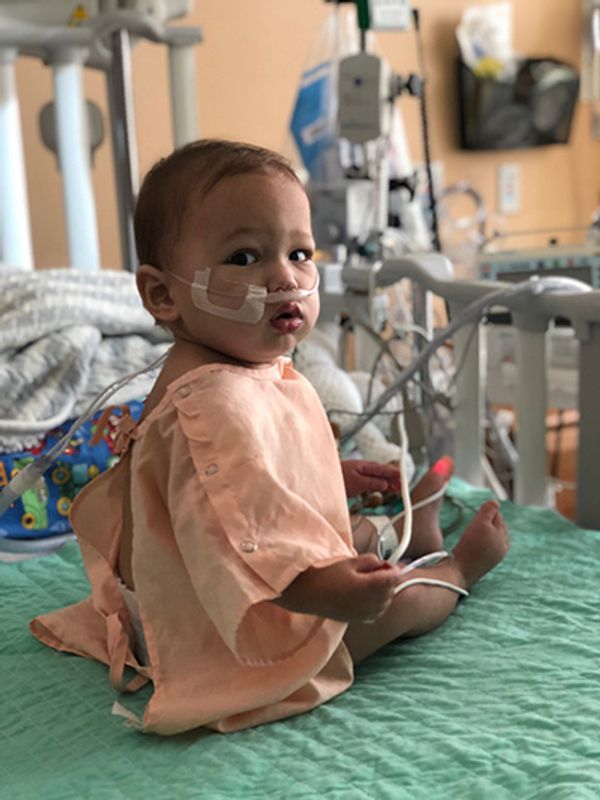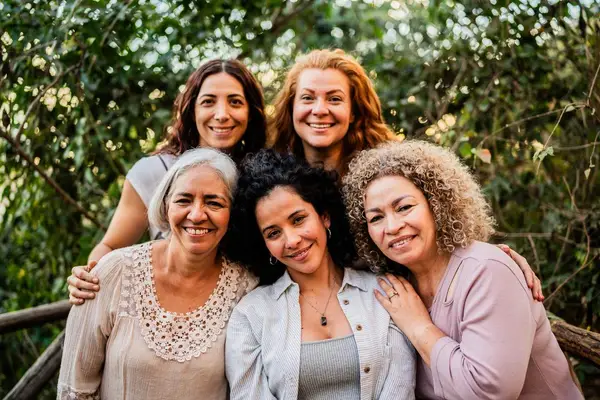Pneumococcal disease is an umbrella term for illnesses caused by bacteria called pneumococcus. There are more than 90 types of pneumococcus, and they’re the leading cause of community-acquired pneumonia (CAP). CAP is the type of pneumonia people get from non-medical community settings.
Pneumonia is a serious infection of the lungs. When you have a bacterial, viral or fungal infection, mucus or pus can build up in the air sacs in the lungs. If you have pneumonia, the buildup keeps oxygen from being transferred to the bloodstream, making it hard to breathe.
What is the connection between flu and pneumonia?
Influenza, known as the flu, is a specific viral infection of the respiratory tract, and it’s one of the common causes of pneumonia. Unlike pneumococcal diseases, the flu cannot be treated by antibiotics.
“Influenza works hand-in-glove with pneumonia,” said William Schaffner, M.D., a professor of infectious diseases at the Vanderbilt University Medical Center. Schaffner added that flu shots can help prevent pneumonia.
Who can get pneumococcal disease, and how?
Pneumococcal bacteria mostly affect infants, toddlers and the elderly. The disease is transmitted through direct contact of bodily fluid, such as when coughing or sneezing. Sometimes people will carry the bacteria in their noses without becoming sick and transmit the disease to other people.
“Children are the great carriers and [spreaders] of pneumococci,” Schaffner said. “They can bring them home, and they can transmit these infections to their parents, grandparents and neighbors.”
Pneumococcal vaccines are part of the childhood immunization schedule, which means that it is recommended that every child get vaccinated against the disease. Schaffner said that the vaccine program has virtually eliminated serious pneumococcal disease in young children.
However, children can still transmit the disease to adults 50 years or over. And older adults are more likely to die from an infection due to preexisting conditions.
Risk factors for pneumococcal disease in adults include:
- Alcoholism
- Cochlear implants
- Cerebrospinal fluid leak
- Smoking
- Diabetes
- Chronic heart/liver/lung disease
- Several immunocompromising conditions, including organ transplants, HIV or sickle cell disease
How serious is pneumococcal disease?
According to the CDC, pneumococcal pneumonia leads to about 150,000 hospitalizations per year. In 2019, pneumococcal meningitis and bacteremia — bacteria in the blood — caused approximately 3,250 deaths in the United States.
Around one in six elderly adults die from pneumococcal meningitis every year.
What are the common symptoms of pneumococcal disease?
Although there are many different kinds of pneumococcal disease, there are some shared symptoms. These include fever, sensitivity to light, ear pain, chest pain, sore throat, difficulty breathing, loss of appetite, confusion, cough and headache.
How is pneumococcal disease treated?
Pneumococcal disease can often be found by testing blood, urine, or the fluid around your brain and spinal cord (cerebrospinal fluid). When the specific bacteria are identified, doctors use an antibiotic that targets that bacteria to treat the infection.
Can vaccines prevent pneumococcal disease?
Vaccines can prevent pneumococcal disease. Two kinds of pneumococcal vaccines are available in the U.S.:
- Pneumococcal conjugate vaccines (PCV13, PCV15 and PCV20)
- Pneumococcal polysaccharide vaccine (PPSV23)
The PCV vaccines have a carrier protein that boosts their effectiveness, and PPSV doesn’t. Still, both vaccines are effective against most common pneumococcal bacteria. PPSV23 is recommended as a booster for people who have certain underlying conditions after they have been given a conjugate vaccine.
There are two recommended vaccination timetables, one for children and one for adults. It’s best to ask your healthcare provider about what’s best for you.
After being vaccinated, common side effects can include sleepiness, decreased appetite, fever, poor sleep quality and irritability.
It’s important to note that these vaccines provide good but not total protection, and it is possible to get sick after getting vaccinated. Also, because there are so many strains, you can get reinfected even after getting sick.
Currently, vaccines are the only preventive measures for pneumococcal disease. So, it’s best to get vaccinated as soon as possible. According to Schaffner, “Vaccinations are key to preventing serious pneumococcal disease.”
This resource was created with support from Merck.
- What You Need to Know About Adult Vaccines and Boosters ... ›
- Annual Checkups for Teenagers - HealthyWomen ›
- Wellness Visits by Decade - HealthyWomen ›
- 10 Vaccines Adults Should Get - HealthyWomen ›
- Clinically Speaking: Q&A About Pneumococcal Disease - HealthyWomen ›

